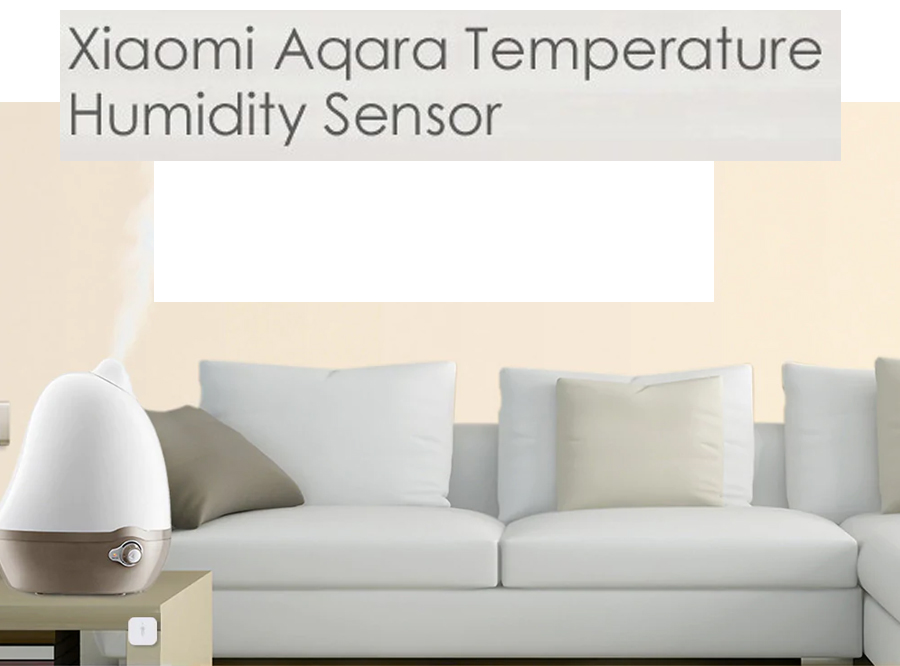Xiaomi Aqara temperature humidity sensor review
Do you want to know in real time the temperature and humidity in your home? This is the xiaomi aqara temperature humidity sensor connected weather station from Elgato, which offers several connected accessories for your home with the special feature of being HomeKit compatible.
When opening the pack, the content is classic, but presented in an aesthetic and neat way. So here is the contents of the package:
In a very good quality packaging, and with an Apple-style presentation, there is a user manual and a card with the serial number that will be useful during installation. The module code is also on the small case, and xiaomi aqara temperature humidity sensor is powered by a replaceable battery.

Product description
The xiaomi aqara temperature humidity sensor measures temperature, humidity and air pressure, both inside and outside your home. Its digital display shows you precisely the data you need on a daily basis. Aqara collects useful statistics to provide you with an analysis over time. All this information will be stored in the Aqara Home app.
With this data, you will be able to make decisions to control the indoor climate in your home. You will have the possibility to program your fans and air conditioners or your heating.
Xiaomi aqara temperature humidity sensor benefits from low power consumption and truly wireless operation thanks to its innovative Zigbee Low Energy technology.
Product characteristics
This small box offers some quite honourable features, as you can see below:
To use your xiaomi aqara temperature humidity sensor, you will need an iDevice running under iOS 11.2, such as an iPhone, iPad or Apple TV. The sensor has a Low Energy wireless connection.
The temperature operating range is -18 °C to + 55 °C with an accuracy of ± 0.3 °C, for humidity: between 0 % and 100 % with an accuracy of ± 3 %. The pressure sensor can accurately measure air pressure.

Getting started and using
Thanks to anodized aluminum, this mini station benefits from a modern and elegant design. There is also a real aesthetic work on the packaging. The xiaomi aqara temperature humidity sensor works perfectly when placed on a surface or fixed to the wall. Thanks to its rainwater protection index, you can place the station outside without protection and withstand light rain.
Once out of the box, simply press the button on the back of the device once to activate xiaomi aqara temperature humidity sensor. This button will allow you to switch between the temperature display and the humidity display. At the back, in addition to the reset button, we find the location of the battery, the announced autonomy is one year.
The Aqara Home app, available on the App Store, offers the advantage of being able to manage all the brand’s products.
Once the application has been downloaded:
Press Add accessory and follow the steps to register the device. You can now access all the devices in your home and also manage statistics, rules and scenarios. Thanks to the application, HomeKit compatibility and the entire Aqara range, you can easily automate your home.
Siri
The information collected by xiaomi aqara temperature humidity sensor is also accessible in Siri. Just ask:
”What is the humidity in the living room?” Siri will answer you instantly….
”What is the temperature in the living room?” Siri will give you the last collected temperature value.
Homekit
Thanks to Apple HomeKit technology, you will be able to connect the xiaomi aqara temperature humidity sensor to your other Aqara or Homekit devices. The app is more complete and allows you to design rules that automatically trigger scenarios under certain conditions, for example:
If your fan is connected to the Aqara outlet, it can start automatically when a certain temperature is reached or exceeded. If the air is too dry, a HomeKit rule activates the humidifier.
Conclusion
So I tested Xiaomi Aqara temperature humidity sensor for a few days, a very practical product with a very nice design. I recommend this product of very good quality. Installation is quick and easy.
- Apple HomeKit compatible
- Accurate temperature and humidity measurement
- Saving measurements
- Can be installed outdoors

 For Xiaomi / Aqara temperature and humidity sensor
For Xiaomi / Aqara temperature and humidity sensor Then the
Then the 